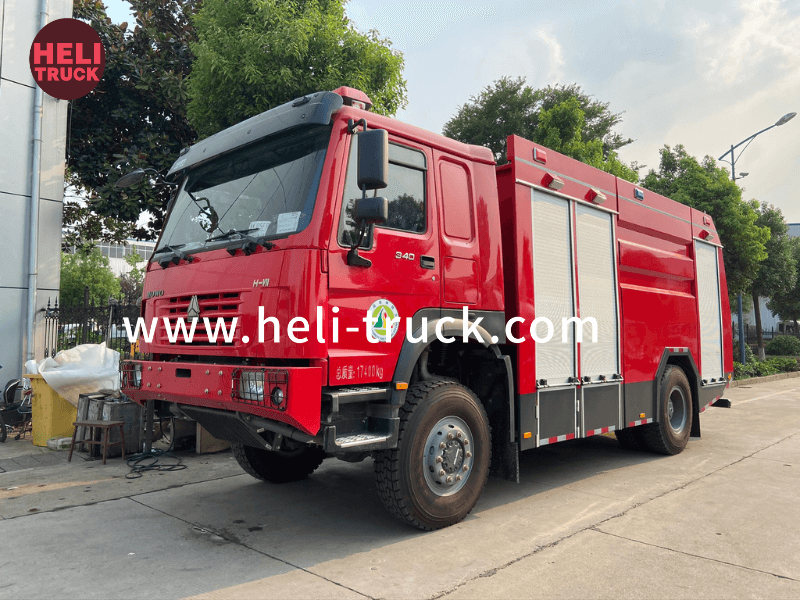Introduction
Urban areas around the world are constantly faced with the challenge of managing waste efficiently and effectively. The rapid pace of urbanization, coupled with increasing populations, has led to a surge in the amount of waste generated in cities. This waste poses a significant threat to public health, the environment, and overall quality of life in urban areas. In order to address this issue, cities rely on a variety of waste management solutions, with garbage compactor trucks playing a crucial role in the collection and disposal of waste. This article explores the importance of garbage compactor trucks in urban areas, their design and operation, as well as the benefits they offer in managing waste in cities.
The Need for Efficient Waste Management in Urban Areas
Urban areas are hubs of economic activity, cultural exchange, and social interaction. However, the rapid pace of urbanization has also led to a surge in the amount of waste generated by cities. From household waste to commercial and industrial waste, urban areas produce vast quantities of garbage on a daily basis. If not managed properly, this waste can pose serious health risks, pollute the environment, and degrade the quality of life for urban residents.
Efficient waste management is therefore essential in urban areas to ensure the health and well-being of residents, protect the environment, and maintain the aesthetic appeal of cities. Garbage compactor trucks play a vital role in this process by collecting, transporting, and disposing of waste in a safe and efficient manner. These specialized vehicles are equipped with compactors that compress waste, allowing for more efficient collection and transport of garbage from various sources in urban areas.
Design and Operation of Garbage Compactor Trucks
Garbage compactor trucks, also known as waste compactors or trash compactors, are specially designed vehicles used for the collection and transport of solid waste. These trucks come in various sizes and configurations to suit the specific needs of different urban areas. The most common types of garbage compactor trucks include rear-loading compactors, front-loading compactors, and side-loading compactors.
Rear-loading compactors are the most common type of garbage compactor trucks and are typically used for residential waste collection. These trucks feature a rear-loading hopper that allows waste collectors to deposit garbage bags and bins into the compactor. Once the hopper is full, the compactor mechanism is activated to compress the waste, reducing its volume and allowing for more efficient collection and transport.
Front-loading compactors are commonly used for commercial and industrial waste collection in urban areas. These trucks feature a front-loading mechanism that allows waste collectors to empty dumpsters and containers directly into the compactor. The waste is then compacted and stored in a sealed container for transport to disposal facilities.
Side-loading compactors are another type of garbage compactor truck that is often used in densely populated urban areas with narrow streets and limited space for maneuvering. These trucks feature a side-loading mechanism that allows waste collectors to pick up waste bins and containers from the side of the vehicle, making them ideal for areas with limited access to curbside collection.
Garbage compactor trucks are typically equipped with hydraulic systems that power the compactor mechanism and other operational features of the vehicle. These trucks also feature sealed compartments to prevent leaks and spills during transport, as well as safety features to protect waste collectors and other personnel involved in the waste management process.
Benefits of Garbage Compactor Trucks in Urban Areas
Garbage compactor trucks offer a wide range of benefits in managing waste in urban areas. Some of the key advantages of these specialized vehicles include:
1. Increased Aerial platform truck telecommunications applications : Garbage compactor trucks are designed to compress waste, allowing for more efficient collection and transport of garbage from various sources in urban areas. This helps to reduce the number of trips required to transport waste to disposal facilities, saving time, fuel, and resources.
2. Improved Hygiene: Garbage compactor trucks are equipped with sealed compartments to prevent leaks and spills during transport. This helps to maintain hygiene standards and prevent the spread of diseases in urban areas.
3. Reduced Environmental Impact: By compacting waste, garbage compactor trucks help to reduce the volume of garbage that ends up in landfills. This helps to conserve valuable landfill space and reduce the environmental impact of waste disposal in urban areas.
4. Cost Savings: Garbage compactor trucks are cost-effective waste management solutions that help cities save money on waste collection and disposal. By reducing the number of trips required to transport waste, these vehicles help to lower operational costs and improve the overall efficiency of waste management in urban areas.
5. Improved Aesthetic Appeal: Garbage compactor trucks help to keep urban areas clean and free of litter, improving the aesthetic appeal of cities and enhancing the quality of life for residents. This can have a positive impact on tourism, economic development, and overall community well-being.
Conclusion

Garbage compactor trucks play a crucial role in managing waste in urban areas by collecting, transporting, and disposing of garbage in a safe and efficient manner. These specialized vehicles are designed to compress waste, increase efficiency, and reduce the environmental impact of waste disposal in cities. By using garbage compactor trucks, urban areas can improve hygiene standards, reduce costs, and enhance the overall quality of life for residents. As cities continue to grapple with the challenges of waste management, garbage compactor trucks will remain essential tools in ensuring the health, safety, and sustainability of urban environments.
